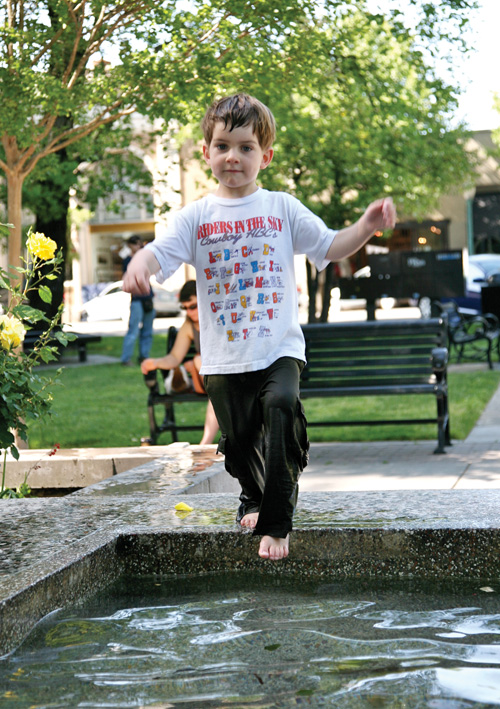
Healdsburg hit high of 90 degrees Monday
Long-range forecasts are not predicting any late spring rains, and so far 2013 is looking to be a hot, dry year.
“It’s really dry, and we’ve been watching reservoir storage levels very, very carefully in both Lake Sonoma and Lake Mendocino,” said Brad Sherwood, public information officer for the Sonoma County Water Agency.
The seasonal rainfall total at the Sonoma County Airport is currently 90 percent of normal, but most of that precipitation came in late 2012. So while cumulative statistics suggest a relatively normal year, farmers, ranchers, and outdoor enthusiasts may see a different reality.
“We got that great rain in December and now we’re bone dry. What’s concerning as well is the lack of tributary flow into the main stem of the Russian River. The tributaries are drying up. It’s looking like 2009 all over again and that was a very dry year,” Sherwood said.
Despite the lack of spring rain, Sherwood did not predict any water use conflicts for the summer, noting that there was enough water for recreational, agricultural, and environmental uses.
“We are working with the Department of Fish and Wildlife, National Marine Fisheries Service, and the U.S. Army Corps of Engineers to ensure we have an ample supply of water for the fish, for our urban water suppliers, agriculture, and the recreational community,” Sherwood said.
Sherwood noted that the agency would be working hard to ensure sufficient water for fall salmon runs.
“We’re mostly concerned about Lake Mendocino water storage levels, because the current storage trend looks like we’re heading towards very similar conditions as 2009. And so we’re going to be essentially working with the state water resources control board to make some modifications for how we’ve released water from our reservoirs. The goal would be to conserve as much water as possible in Lake Mendocino for the fall run of Chinook salmon in the upper Russian River,” Sherwood said.
“We’re working closely with the agricultural community to let growers know we’re looking at a dry year, which they’re very aware of, and to be really efficient with water this summer.”
Long-range forecasts had accurately predicted a dry spring. Western Weather Group meteorologist Matt Wanink expects that trend to continue.
“As of right now, the models were trending towards a dry spring and that’s exactly what’s been going on,” Wanink said.
“High pressure has been over California and pushing everything further north into the Pacific Northwest and British Columbia, which has been why it’s been so dry. Systems have also been going into the central US and we’ve been getting the back side of troughs which have been giving us the northerly winds which has been making forecasting difficult.”
Strong winds can cause dramatic temperature variations across the county, with wind-sheltered areas dropping into the 30s overnight while windy areas remain in the 50s or even 60s.
“Even this morning in Alexander Valley, we have a station near Jimtown and the wind kicked up to 30 mph by 5 a.m., and the temperature kicked up to 70. Then the winds stopped and the temperature dropped to 50,” Wanink said.
Daytime temperatures may range from the pleasant 70s and 80s to the more searing 90s, depending on the direction of airflow over the Pacific.
“The models have been pretty consistent that it’s going to stay dry over California. And then it’s a matter of if there’s a big ridge forming, and an offshore flow, you get temperatures in the 90s. If the ridge moves away and you get the onshore flow, you get the 70s and 80s,” Wanink said.
Coastal areas may also begin to see the typical summer weather pattern of marine fog filling valleys overnight and burning off during the day.







